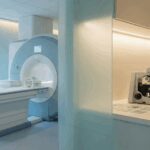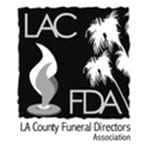Understanding the Personal Journey Behind Brain-Only Autopsies
The widow sat in her car outside the medical examiner’s office in La Crescenta, her hands trembling as she held the phone. Her husband of forty-three years had passed away suddenly, and the doctors couldn’t provide clear answers about his recent memory problems and personality changes. The family physician mentioned something about possible neurological disorders, but without a proper examination, they would never know for certain. This uncertainty gnawed at her, especially knowing their adult children might face similar risks.
The decision to pursue a brain-only autopsy came after weeks of sleepless nights and countless questions. Her story represents thousands of families who seek answers through specialized post-mortem examination when traditional medical approaches fall short.
The Science Behind Specialized Brain Examination
A brain autopsy involves the careful removal and detailed analysis of brain tissue to identify specific neurological conditions that may not be visible through standard imaging or clinical tests. Unlike a full autopsy that examines all major organ systems, this focused approach allows pathologists to concentrate entirely on neuropathological analysis.
The process requires specialized expertise in neuropathology, where trained professionals examine brain tissue under microscopes, looking for protein deposits, cellular changes, and structural abnormalities that indicate specific diseases. This targeted examination often reveals conditions like Alzheimer’s disease, Parkinson’s disease, chronic traumatic encephalopathy, or other neurodegenerative disorders that can only be definitively diagnosed through direct tissue examination.
Medical examiners use advanced techniques during brain tissue examination, including immunohistochemistry and molecular testing, to identify specific markers associated with various neurological disorders. These methods provide accuracy levels that surpass clinical diagnosis alone, offering families concrete answers about their loved one’s condition.
Personal Reasons That Drive Family Decisions
Families choose brain-only autopsies for deeply personal reasons that extend beyond simple curiosity. The need for closure often motivates these decisions, particularly when loved ones experienced unexplained cognitive decline, behavioral changes, or neurological symptoms before death.
The daughter’s father spent his final years battling what doctors suspected was dementia, but the family never received a definitive diagnosis. His personality changed dramatically over eighteen months, transforming from a gentle professor into someone who barely recognized his own children. After his passing, she chose a brain autopsy to understand what had happened to the man who raised her.
“We needed to know,” the daughter explained. “Not just for closure, but because my siblings and I wanted to understand our own risks. The uncertainty was eating away at our family.”
The emotional weight of watching a loved one’s mind deteriorate creates a profound need for understanding. Families often describe feeling helpless during their loved one’s illness, and a brain-only autopsy provides an opportunity to gain control through knowledge.
Medical Necessity and Diagnostic Clarity
Beyond personal reasons, medical necessity often drives the decision for specialized brain examination. When patients die with undiagnosed neurological symptoms, traditional clinical methods may have missed crucial information that only neuropathological analysis can reveal.
A neuropathologist in California explains that many neurological conditions share similar symptoms during life but require different approaches for family members who may be at risk. A brain autopsy can distinguish between Alzheimer’s disease and frontotemporal dementia, conditions that appear similar clinically but have different genetic implications for surviving relatives.
The precision of post-mortem examination often surprises families. Clinical diagnosis accuracy for certain neurological disorders ranges from 60-80%, while neuropathological analysis approaches 95% accuracy for most conditions. This difference becomes crucial when families need definitive answers for genetic counseling or future healthcare planning.
Autopsy alternatives like brain-only examination also serve important roles in medical research. Each case contributes to our understanding of neurological disorders, potentially helping future patients and families facing similar circumstances.
Real-Life Cases That Demonstrate Impact
One family’s experience illustrates how brain autopsy can transform uncertainty into actionable knowledge. Their 67-year-old patriarch died after a two-year battle with progressive cognitive decline that doctors initially attributed to normal aging. His symptoms included memory loss, difficulty with familiar tasks, and personality changes that gradually worsened.
After his death, the family pursued a brain-only autopsy despite initial hesitation about the procedure. The neuropathological analysis revealed advanced Alzheimer’s disease with significant amyloid plaque buildup, providing the family with definitive answers they had sought for years.
More importantly, this diagnosis allowed their adult children to seek appropriate genetic counseling and begin preventive measures. Two of the children discovered they carried genetic markers associated with increased Alzheimer’s risk, leading them to modify their lifestyle choices and establish regular monitoring with neurologists.
Another compelling case involved a 45-year-old former football player whose family chose brain tissue examination after his suicide. The player had suffered multiple concussions during his career and experienced depression, memory problems, and aggressive behavior in his final years. The brain autopsy revealed chronic traumatic encephalopathy, providing his family with crucial information about the role of head trauma in his mental health struggles.
This diagnosis not only offered the family closure but also contributed to ongoing research about sports-related brain injuries. The findings helped his teenage son make informed decisions about participating in contact sports, potentially preventing similar tragedy.
The Decision-Making Process for Grieving Families
Choosing a brain-only autopsy requires families to navigate complex emotions while making time-sensitive decisions. The process typically begins when families recognize that unanswered questions about their loved one’s neurological condition will impact their ability to move forward.
Grief support professionals often help families understand that seeking answers through specialized examination represents a healthy part of the mourning process. Rather than dwelling on uncertainty, families can channel their energy toward gaining knowledge that honors their loved one’s memory while potentially benefiting others.
The decision timeline becomes crucial because brain tissue examination must occur within specific timeframes to ensure accurate results. Families typically have 24-72 hours after death to authorize the procedure, depending on circumstances surrounding the death and preservation conditions.
Financial considerations also influence family decisions. Brain-only autopsies cost significantly less than full autopsies while providing focused answers to specific neurological questions. This partial autopsy approach makes the service accessible to more families who might not afford comprehensive post-mortem examination.
Scientific Contributions and Medical Advances
Every brain autopsy contributes valuable data to medical research, helping scientists understand neurological disorders better. Families often find comfort knowing their loved one’s examination will help future patients and their families avoid similar uncertainty.
Brain donation through autopsy programs has led to breakthrough discoveries in Alzheimer’s research, Parkinson’s disease treatment, and chronic traumatic encephalopathy prevention. The tissue samples obtained through these examinations become part of research databases that scientists worldwide use to develop new treatments and diagnostic tools.
Neuropathological analysis from individual cases has identified new disease variants, helped refine diagnostic criteria, and contributed to genetic research that benefits countless families. This scientific impact gives families additional meaning in their difficult decision, transforming personal loss into potential hope for others.
Research institutions collaborate with medical examiners to ensure that brain tissue examination follows protocols that maximize both diagnostic accuracy for families and research value for the scientific community. This dual purpose creates a powerful legacy for individuals who undergo brain-only autopsy.
Addressing Common Concerns and Misconceptions
Families considering brain autopsy often worry about the impact on funeral arrangements and viewing options. Modern techniques allow pathologists to perform brain tissue examination while preserving the deceased’s appearance for traditional funeral services. The procedure occurs through small incisions that skilled morticians can easily conceal.
Religious and cultural considerations sometimes create additional complexity in family decisions. Many faith traditions support the pursuit of medical knowledge that can help others, viewing brain donation and examination as acts of compassion. Families should discuss their concerns with religious leaders who can provide guidance consistent with their beliefs.
The emotional challenge of authorizing any post-mortem examination can feel overwhelming during early grief. However, families who choose brain-only autopsy consistently report that having definitive answers reduces long-term distress and helps them focus on positive memories of their loved one.
End-of-Life Decisions That Honor Memory
Ultimately, the choice to pursue a brain-only autopsy represents a family’s commitment to honoring their loved one’s memory through the pursuit of truth and knowledge. This decision transforms the tragedy of neurological disease into an opportunity for understanding that can benefit both the immediate family and the broader community.
The specialized nature of brain tissue examination ensures that families receive precise answers to their most pressing questions while contributing to medical research that may prevent similar suffering for others. This combination of personal closure and altruistic impact creates lasting meaning from devastating loss.
For families facing uncertainty about a loved one’s neurological condition, brain-only autopsy offers a path toward answers, closure, and hope. The decision requires courage and determination, but the knowledge gained often provides the foundation for healing and moving forward with confidence rather than fear.
Frequently Asked Questions About Brain-Only Autopsies
How long does a brain autopsy take to complete? The actual brain tissue examination procedure typically takes 2-4 hours to perform. However, the complete neuropathological analysis, including microscopic examination and specialized testing, usually requires 6-12 weeks for final results. Preliminary findings may be available within 2-3 weeks.
Will a brain-only autopsy affect funeral arrangements? Modern brain autopsy techniques preserve the deceased’s appearance for viewing and funeral services. The procedure uses small, carefully placed incisions that skilled funeral directors can easily conceal. Most families proceed with their planned funeral arrangements without any visible impact.
How much does a brain autopsy cost compared to a full autopsy? Brain-only autopsies typically cost 40-60% less than comprehensive full autopsies. The exact cost varies by location and specific testing requirements, but this partial autopsy approach makes specialized examination accessible to more families seeking neurological answers.
Can other family members benefit from the results? Yes, brain autopsy results often provide crucial information for genetic counseling and family health planning. Definitive diagnosis of conditions like Alzheimer’s disease, Huntington’s disease, or other hereditary neurological disorders helps relatives understand their own risk factors and make informed healthcare decisions.
What conditions can brain tissue examination definitively diagnose? Neuropathological analysis can conclusively diagnose Alzheimer’s disease, Parkinson’s disease, chronic traumatic encephalopathy, frontotemporal dementia, Huntington’s disease, multiple sclerosis, and various forms of brain cancer. Many of these conditions cannot be definitively diagnosed through clinical methods alone.
How quickly must the decision be made after death? Families typically have 24-72 hours after death to authorize brain autopsy, depending on preservation conditions and circumstances. Earlier authorization generally produces better tissue quality for examination, so families should contact medical examiners as soon as they decide to proceed.
Do all medical examiners perform brain-only autopsies? Not all facilities offer specialized brain autopsy services. Families should contact medical examiners or autopsy services that specifically advertise neuropathological expertise to ensure proper examination and accurate results.
Will insurance cover the cost of a brain autopsy? Most insurance plans do not cover elective post-mortem examinations. However, some policies may provide coverage when brain autopsy is deemed medically necessary for family health planning or when ordered by a physician for specific diagnostic purposes.
Can brain tissue be donated for research purposes? Yes, many brain autopsy programs include options for brain donation to research institutions. This contribution helps advance scientific understanding of neurological disorders while providing families with comprehensive examination results.
What happens if the family changes their mind after authorizing the procedure? Once brain tissue examination begins, the process cannot be reversed. Families should carefully consider their decision and discuss any concerns with grief counselors or medical professionals before providing authorization.








